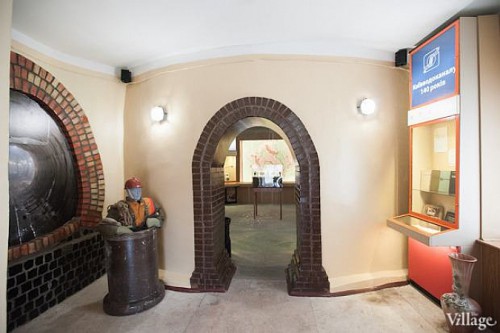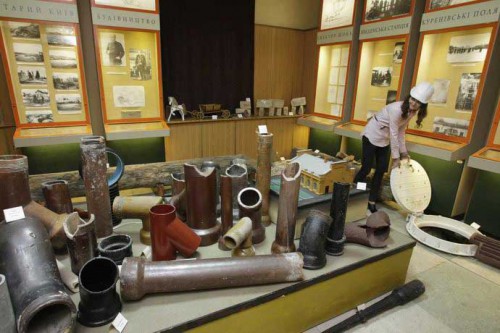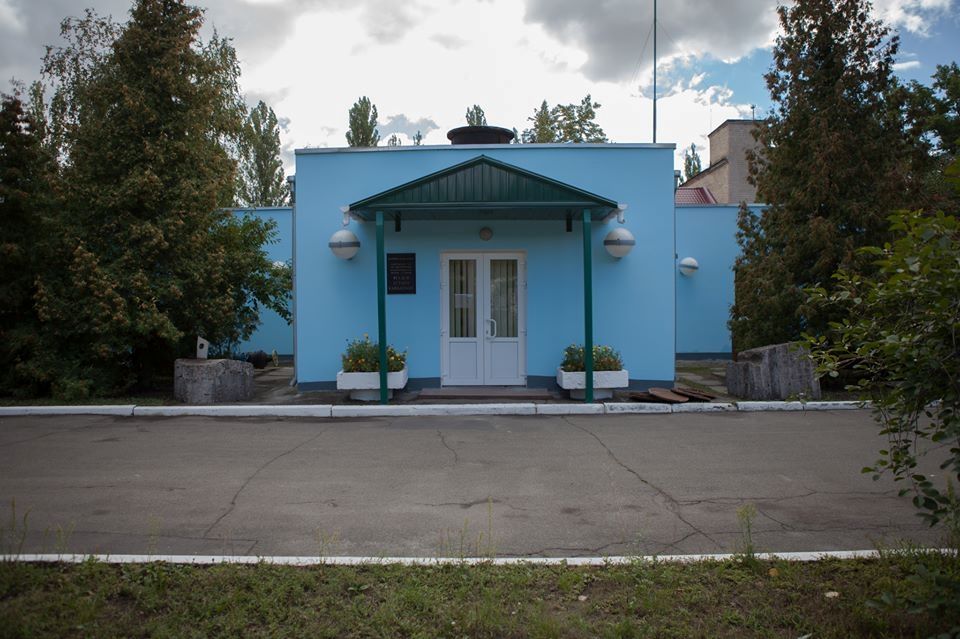The Museum of Sewage in Kyiv attracts visitors with an unusual exposition dedicated to the development of sewage not only in Ukraine, but also in other countries. Everything is harmonious in this museum. Even the house in which it is located is not just a house, but an old sewage pumping station located on the left bank of the Dnieper. The Sewerage Museum was founded in 1994 with the support of the Kyiv City Water Corporation. To this day, the museum remains its structural subdivision. The opening of such a museum in the capital of Ukraine was timed to the centenary of the establishment of the centralized sewage system in Kyiv, which was laid in 1894.
The sewerage museum is unique in its very existence. There are similar museums in almost all major cities of Europe, however, today the sewage museum is the only one in Ukraine. Museum exhibits are displayed in two main halls. The tour guide tells about the origin of the sewage business, draws visitors' attention to the sewage scheme that worked in ancient Greece and Rome, where the world's first sewage system appeared. The main material for the manufacture of sewer pipes was ceramics, because it was strong, inexpensive to use, and did not rot after being in the ground for a long time. The museum exhibits specimens of ceramic pipes of various diameters. The thinnest pipes are only 5 cm. To prevent them from clogging, the janitors were forced to clean the sewer grates in the yards every day. This was strictly monitored by the precinct officers.
The exposition of the sewerage museum is represented by a wide variety of exhibits, which in one way or another are connected with the history of the development of sewerage. Ceramic water pipes that have reached a respectable 100-year-old age, a diagram of Kyiv's sewage networks, and equipment for cleaning sewage paths are for the attention of visitors. A life-size model of the Lybidsky collector attracts attention, and there is also a model of the training ground. Excursionists can even see the special uniform of sewer service workers.
After visiting the sewerage museum in Kyiv, visitors will also learn how the first sewerage system was organized in the capital of Ukraine, because the main part of the exposition is, of course, dedicated to the sewage system of Kyiv. Before its appearance, water was taken from the Dnipro and transported in carts. Waste was poured directly into the yard or into ditches, one of which served the Hlybochytsia river, which flowed behind the current Verkhniy and Nizhniy Val streets. Such a situation created terrible sanitary conditions, contributing to the steady growth of diseases and, accordingly, the mortality of Kyivans. The organization of sewerage in Kyiv was able to partially solve this problem. The museum even presents a report by doctors of that time, which confirms the decrease in mortality among Kyiv residents. The Shonov sewage system was launched in the capital, which became one of the first separate sewers in Europe. Its principle was that sewage and rainwater flow through different pipes, that is, two independent sewers actually work.
A separate stand is dedicated to Amanda Struve, a well-known entrepreneur, philanthropist, and initiator of sewer construction in the city. The museum has archival documents that testify that one of the contractors for the construction of sewers in Kyiv was the construction company of Vladyslav Horodetskyi. He took a direct part in the development of projects for special buildings on Vvedenska Street - the complex has survived to this day.
The sewerage museum draws the attention of visitors not only to the ancient details of the sewerage system. There is a separate stand where the work of the modern service of the water supply company is shown: all the necessary equipment, fasteners, descents into hatches. The tour guide explains how difficult it is to work in the hatch, because the height of the channel is about 90 cm, you have to stand in a half-bent position, knee-deep in water. It is necessary to work in gas masks and special suits. To determine the presence of gas, a "Devi lamp" (LBVK) is used, like the one in coal mines, because methane, hydrogen sulfide, and carbon monoxide are found in the collectors.
The courtyard of the sewerage museum is also unusual. The elements of water pressure pipes that did not fit inside are displayed here. The construction was assembled by the museum employees themselves, gluing together pieces of what was found after the finds. There is also sewage equipment, which resembles a bathyscaphe, there is a large water faucet. You can enter the unique museum on any working day, but you need to call and make arrangements with the administrator in advance.
The sewerage museum does not stop there. His collection is constantly replenished with new exhibits. The latest acquisitions of the museum were pieces of two hundred-year-old pipes, brought by employees of the city water supply company. Modern exhibits also appeared in the exhibition, namely samples of new sewer hatches made of metal-plastic and plastic, which began to be installed only in recent years. In addition to exhibition activities, the museum, together with the Water Information Center, keeps records of monuments of water supply preserved in Ukraine.


